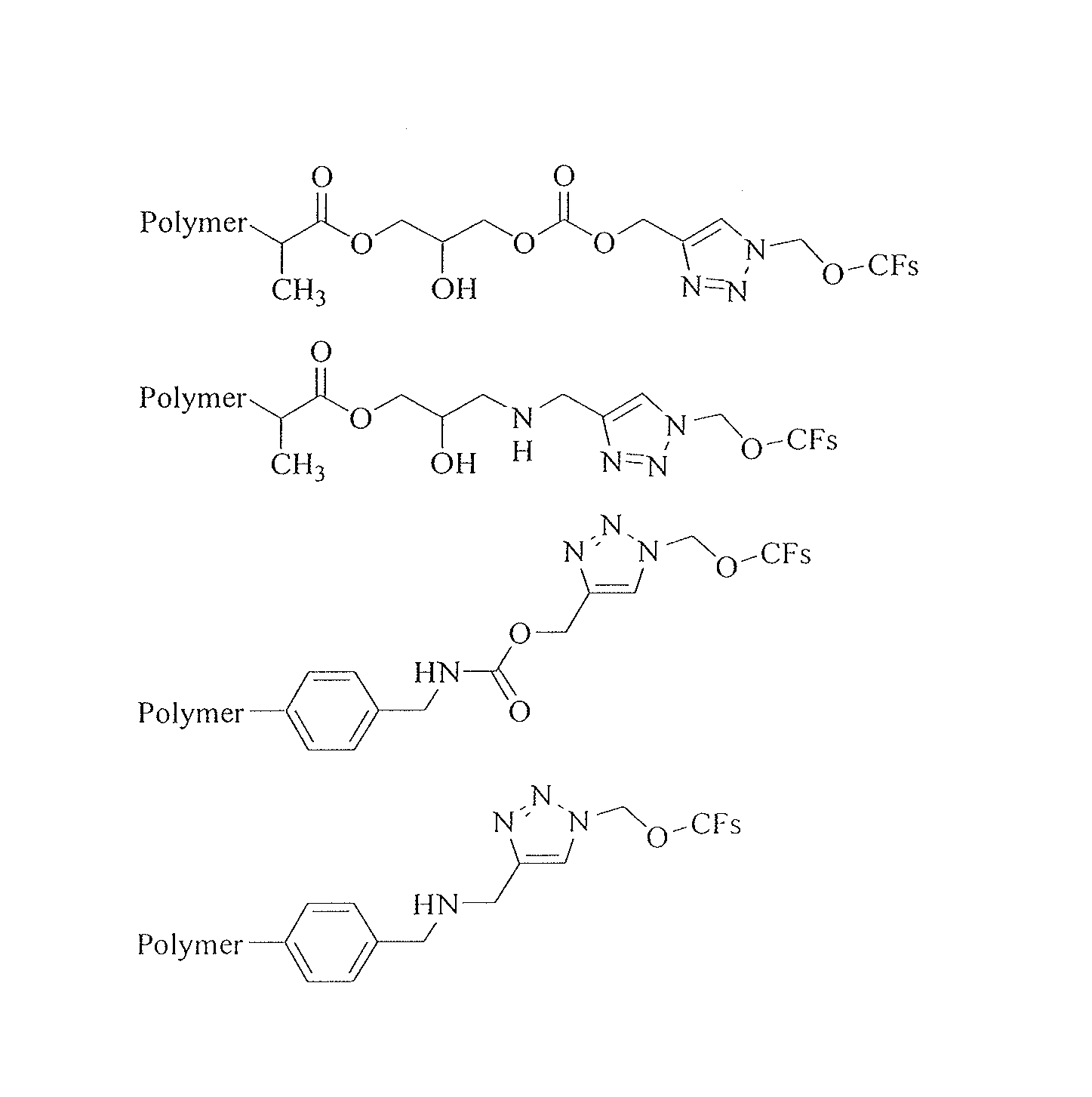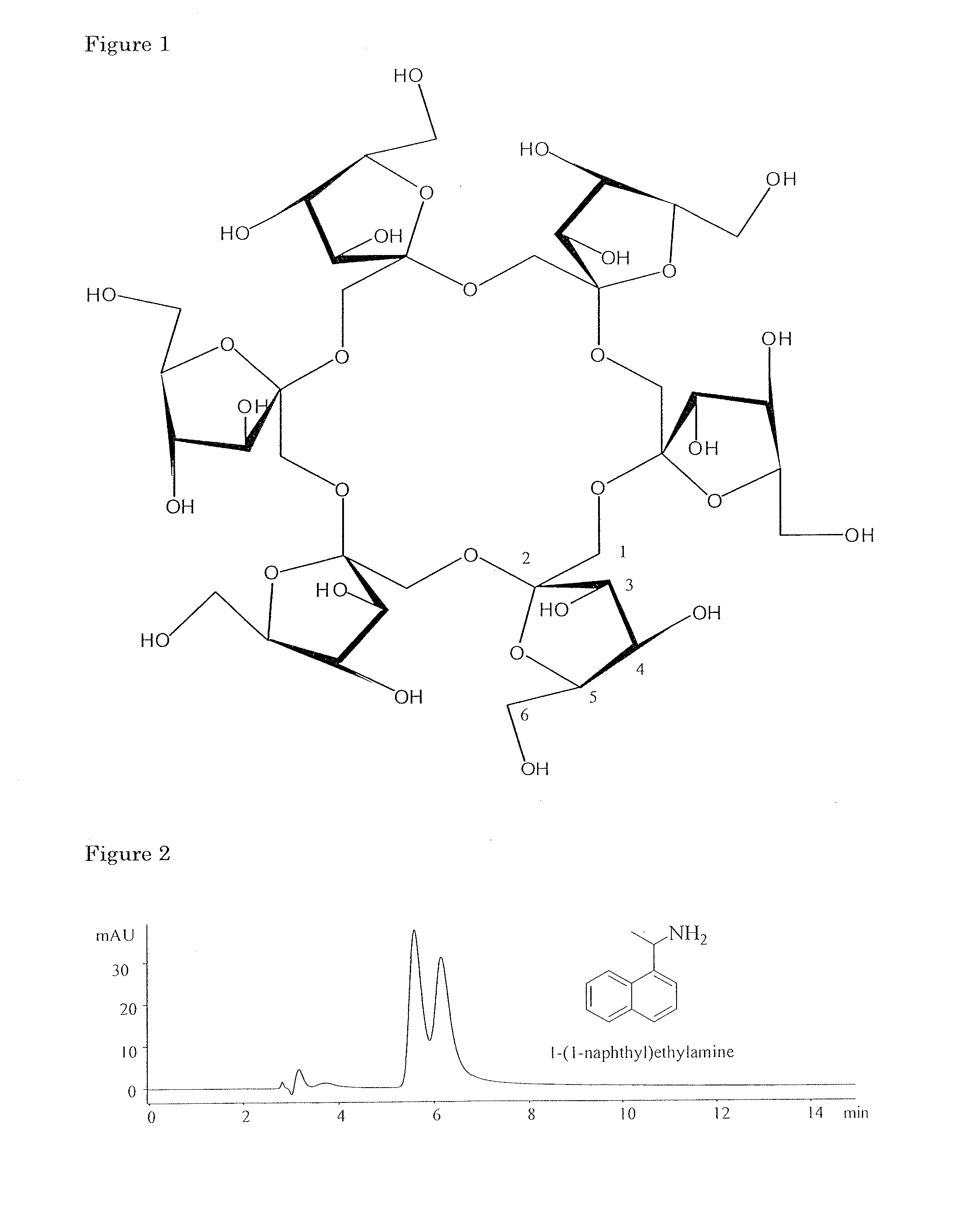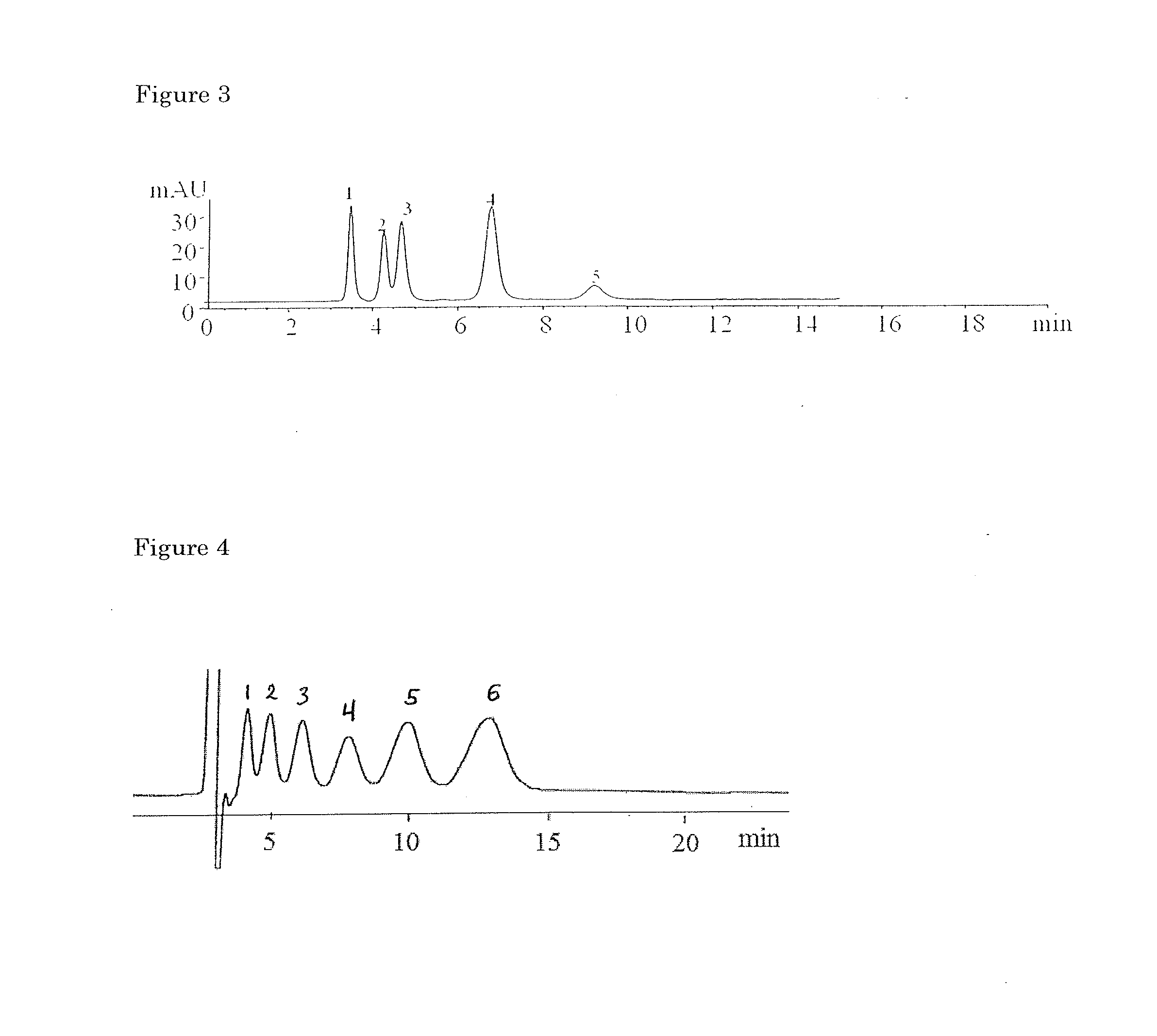Chromatographic separation material
- Summary
- Abstract
- Description
- Claims
- Application Information
AI Technical Summary
Benefits of technology
Problems solved by technology
Method used
Image
Examples
example 1-1
Cross-Linked (Meth)Acrylic-Based Polymer
[0207]This example shows preparation and performance of cross-linked acrylic polymer comprised of derivatized cyclofructan.
Synthesis Method
[0208]In a 100 ml 3-neck flask, 1.2 g CF6 was dried at 110° C. in an oven for 6 hours. Then 30 ml anhydrous pyridine was added to dissolve CF6. Next, 0.5 ml of isopropyl isocyanate in 10 ml pyridine was added to the cyclofructan solution dropwise under dry nitrogen protection. The mixture was stirred and heated at 90° C. for 6-10 hours and left for cool down.
[0209]At the same time, 3.0 g of acrylic polymer was placed in a 300 ml 3-neck flask and dried at 50° C. in a vacuum oven for 6 hours. The polymer was 30 wt % cross-linked glycidymethacrylate-ethylene glycol dimethacrylate copolymer with the properties of 30 μm spherical diameter, 65 Å pore diameter, and 170 m2 / g specific surface area. Anhydrous toluene was added under dry nitrogen protection, and 0.2 g of aluminum chloride and 0.7 g of sodium hydride w...
example 1-2
Cross-Linked Styrene-Based Polymer
[0213]This example shows preparation and evaluation of chiral separation performance of styrene polymer-bonded derivatized cyclofructan. In particular, this example, as well as Example 1-3 and 1-4, shows that 1,3-dipolar cycloaddition reactions of azides with alkynes can be used to attach underivatized and derivatized cyclofructans to organic polymers. In some embodiments of the present invention, the polymer can be modified with azide groups, while the cyclofructan is derivatized with alkynes before a click chemistry reaction. In other embodiments, the polymer can be modified with alkynes, while the cyclofructan is derivatized with azide groups. In this example, for illustration purpose only, azide-modified styrene polymer reacts with alkyne-functionalized cyclofructan to afford the covalently bonded cyclofructan separation material.
Synthesis
[0214]The synthesis method involves four steps: functionalization of polymer with azide group, preparation o...
example 1-3
Cross-Linked Styrene-Based Polymer
[0218]This example shows preparation and chiral separation performance of styrene polymer-bonded derivatized cyclofructan. In particular, this Example, as well as Example 4, shows that in some embodiments of the present invention, a cyclofructan can be first bonded to organic polymer and then later derivatized to form a polymer-bonded derivatized cyclofructan.
Synthesis
[0219]The synthesis method involves four steps: functionalization of polymer with azide group, prepation of propargyl CF6, reaction of click chemistry between azide-polymer with propargyl CF6, and derivatization of CF6 with IP. The synthesis was conducted in a similar manner as Example 1-2 except that the preparation of IPCF6 of the second step was altered to the last step for this procedure. Using the same polymer and first synthesis step as Example 1-2, polymer was functionalized with azide group. As a second step, 2 g CF6 was placed in 100 ml 3-neck flask and reaction took place as ...
PUM
| Property | Measurement | Unit |
|---|---|---|
| Water holding capacity | aaaaa | aaaaa |
| Pore volume | aaaaa | aaaaa |
| Separation | aaaaa | aaaaa |
Abstract
Description
Claims
Application Information
 Login to View More
Login to View More - R&D
- Intellectual Property
- Life Sciences
- Materials
- Tech Scout
- Unparalleled Data Quality
- Higher Quality Content
- 60% Fewer Hallucinations
Browse by: Latest US Patents, China's latest patents, Technical Efficacy Thesaurus, Application Domain, Technology Topic, Popular Technical Reports.
© 2025 PatSnap. All rights reserved.Legal|Privacy policy|Modern Slavery Act Transparency Statement|Sitemap|About US| Contact US: help@patsnap.com



